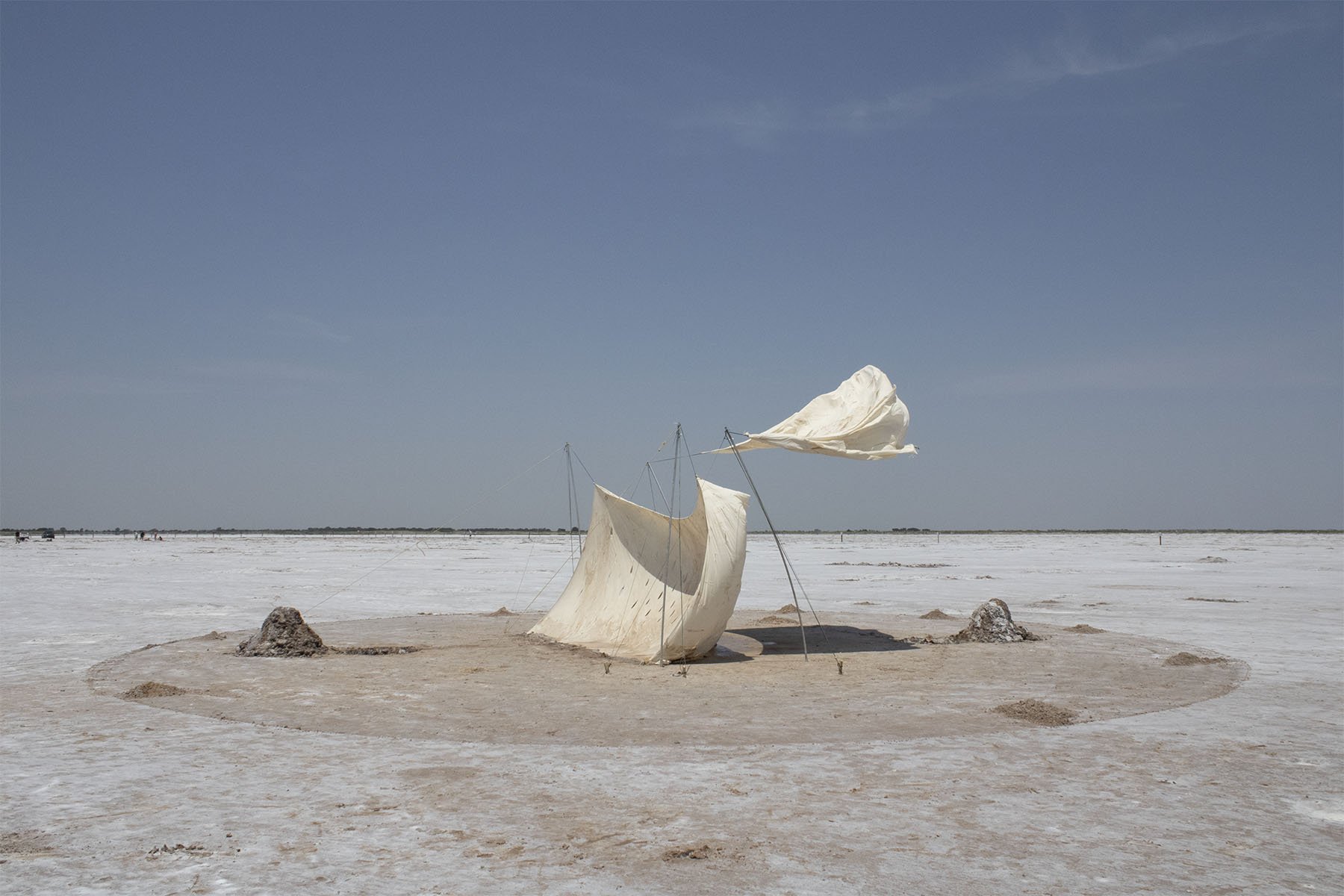
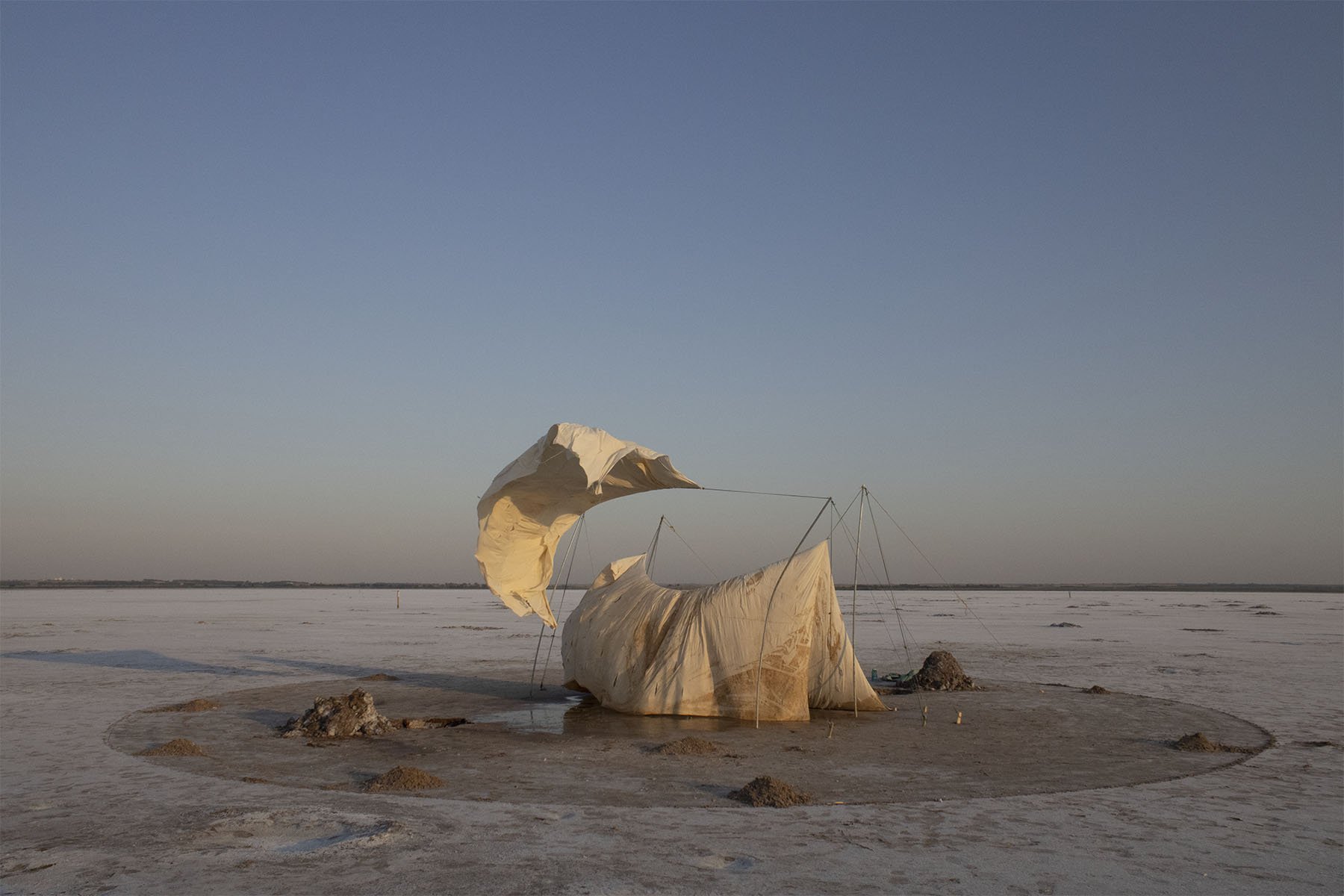
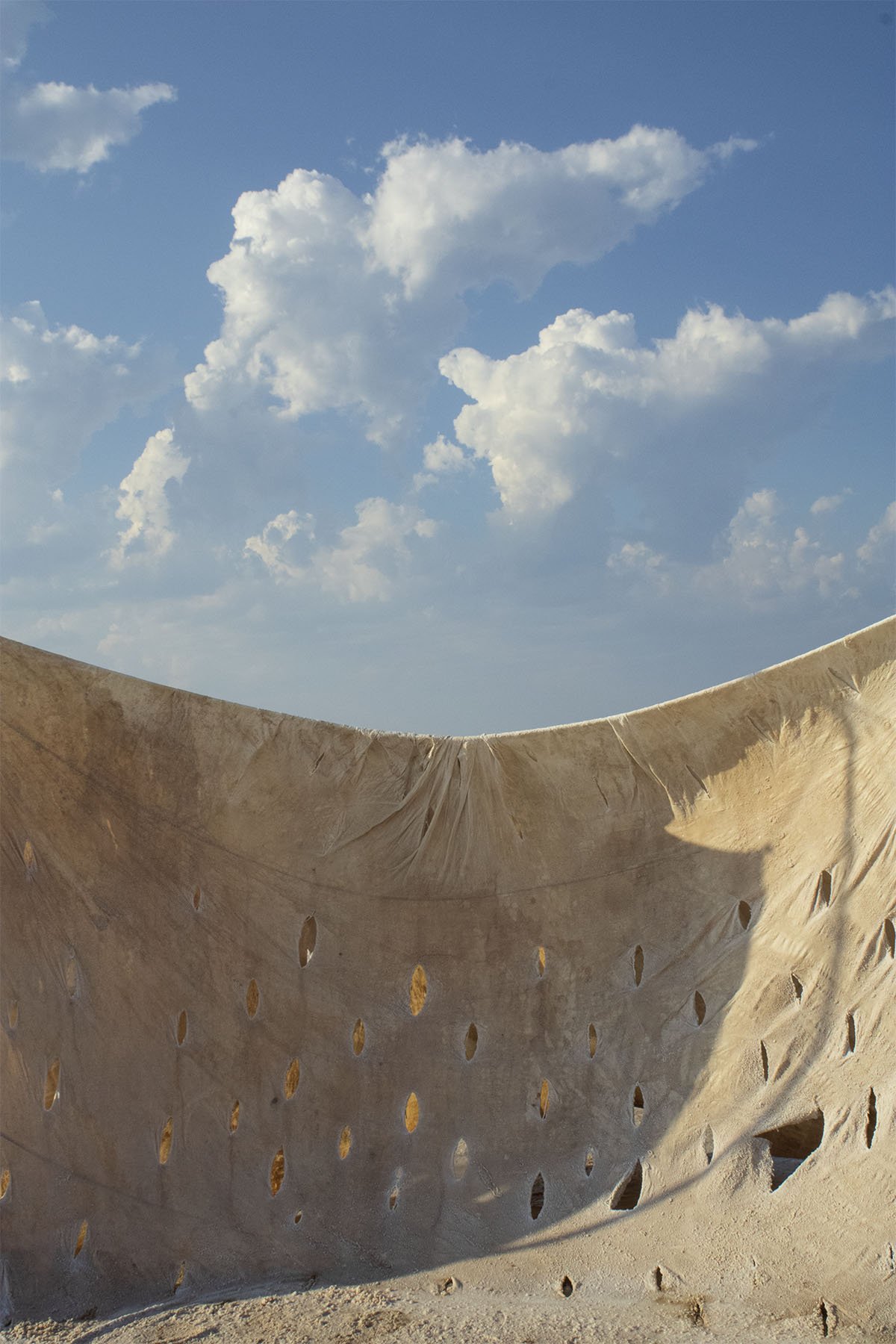
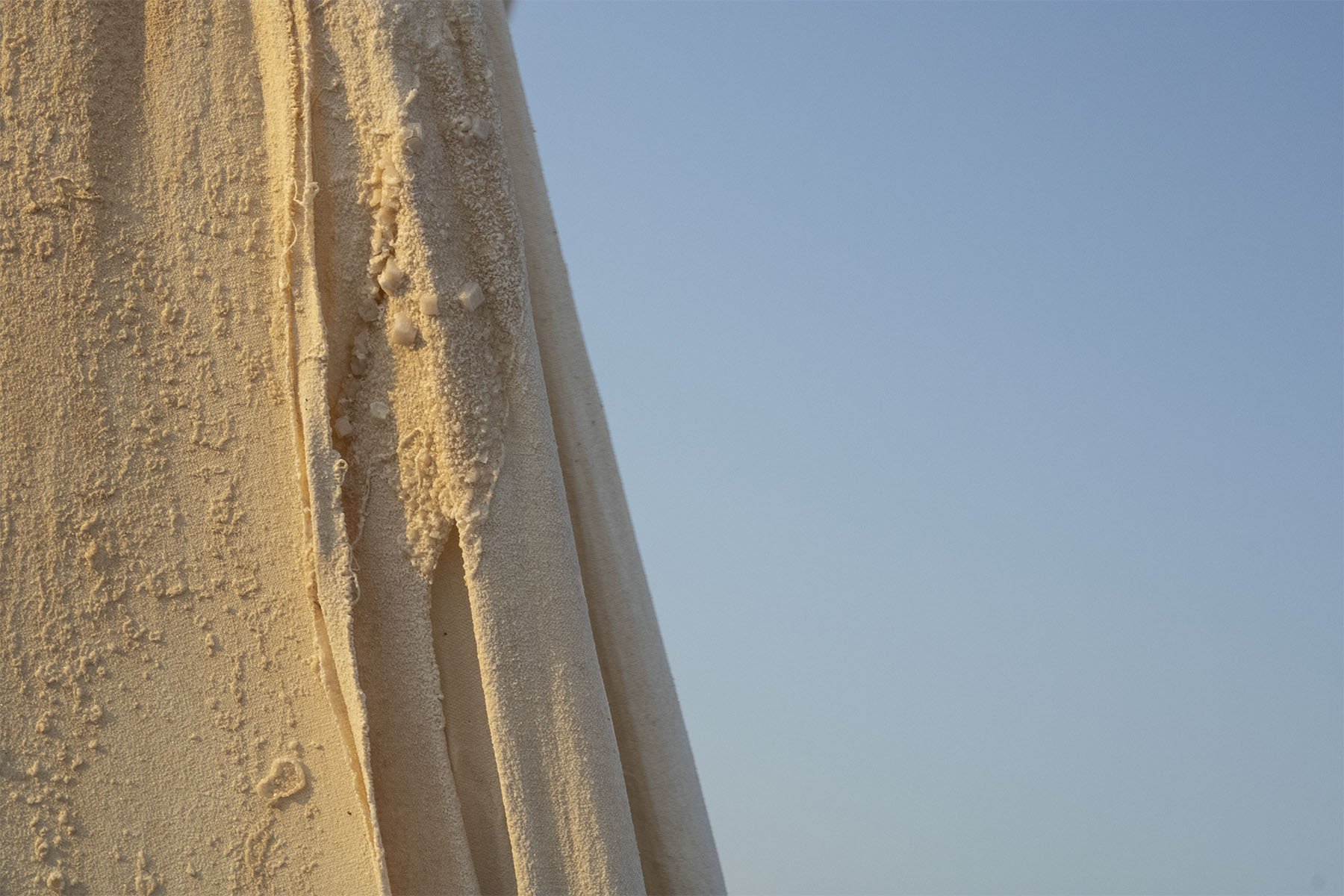
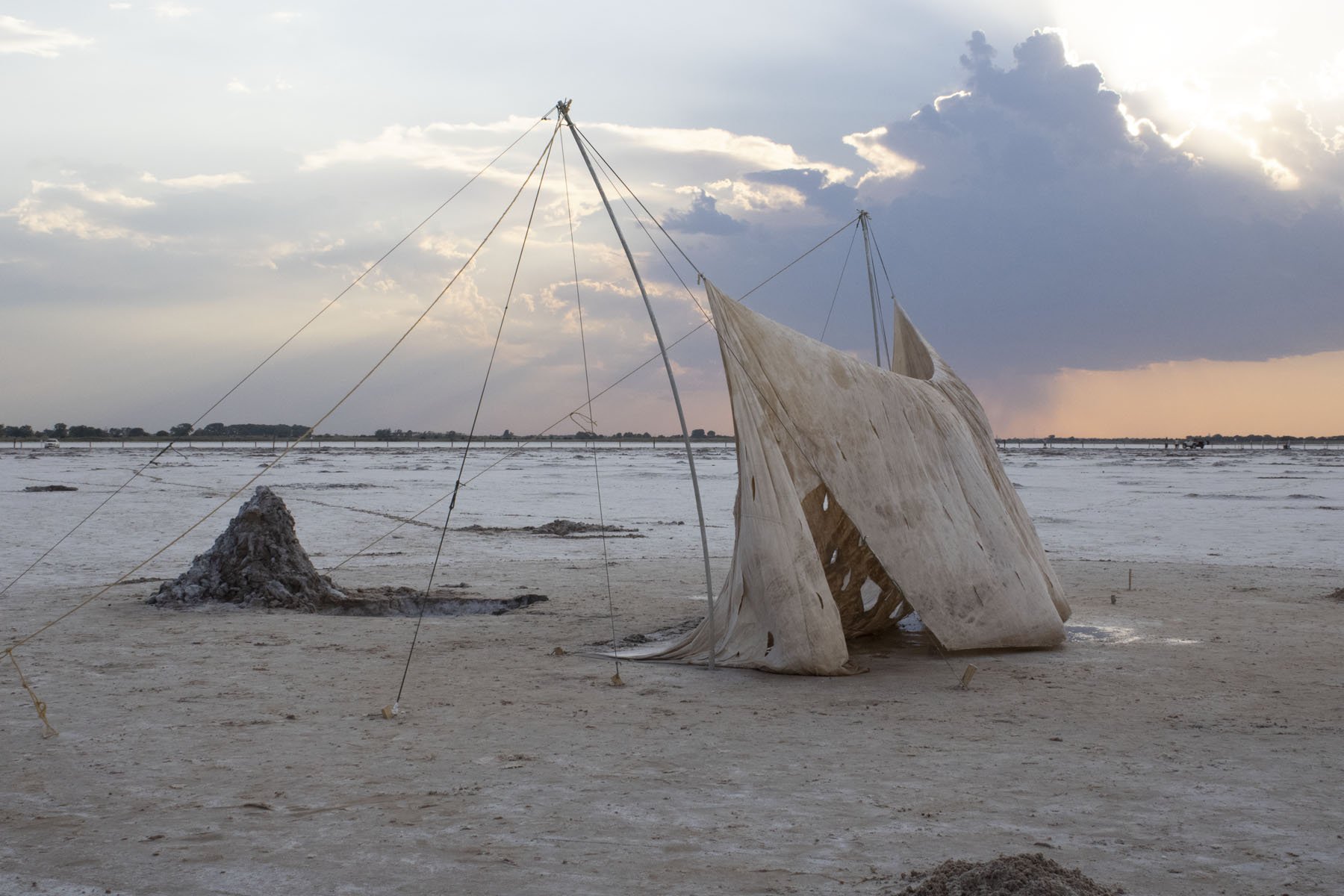
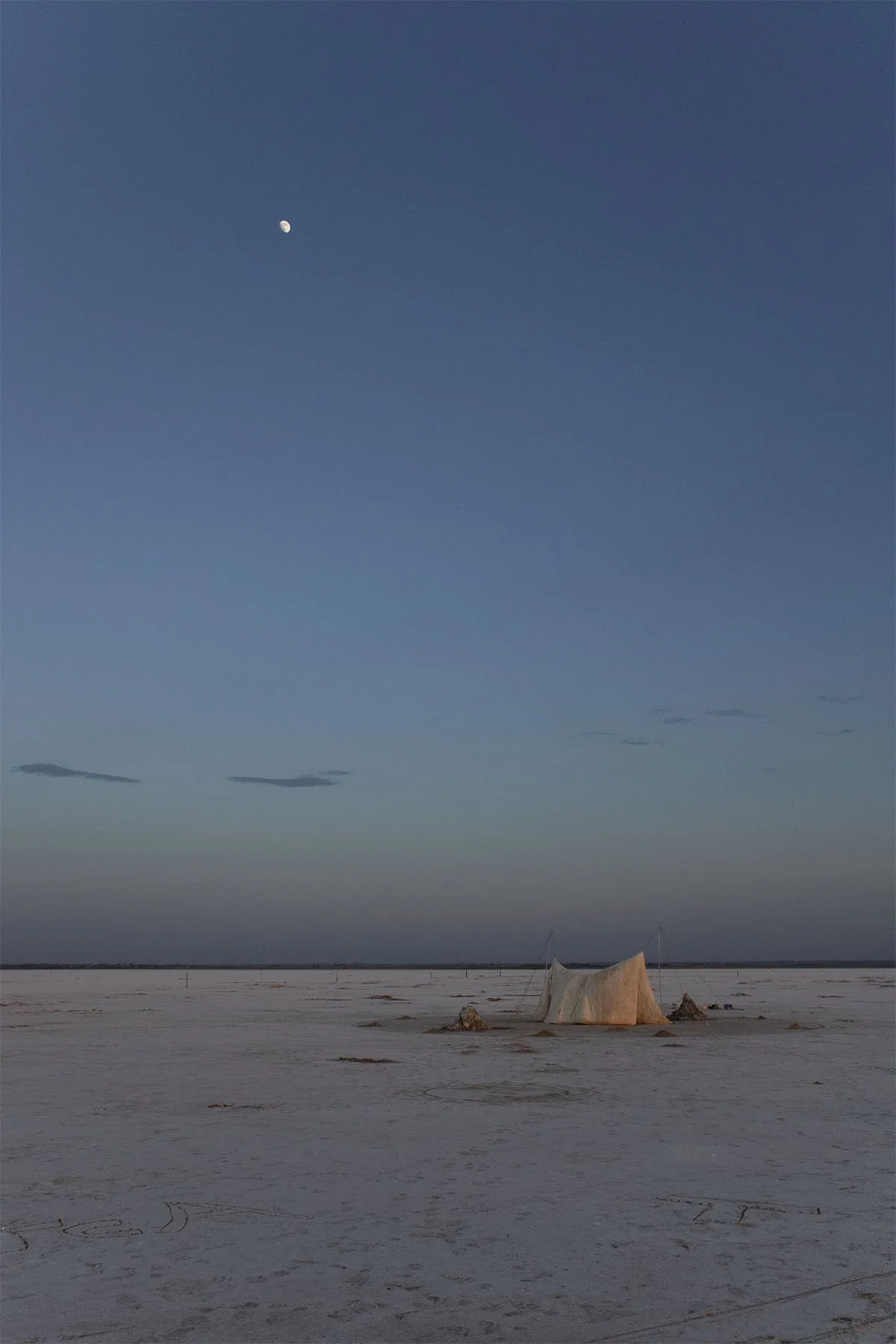
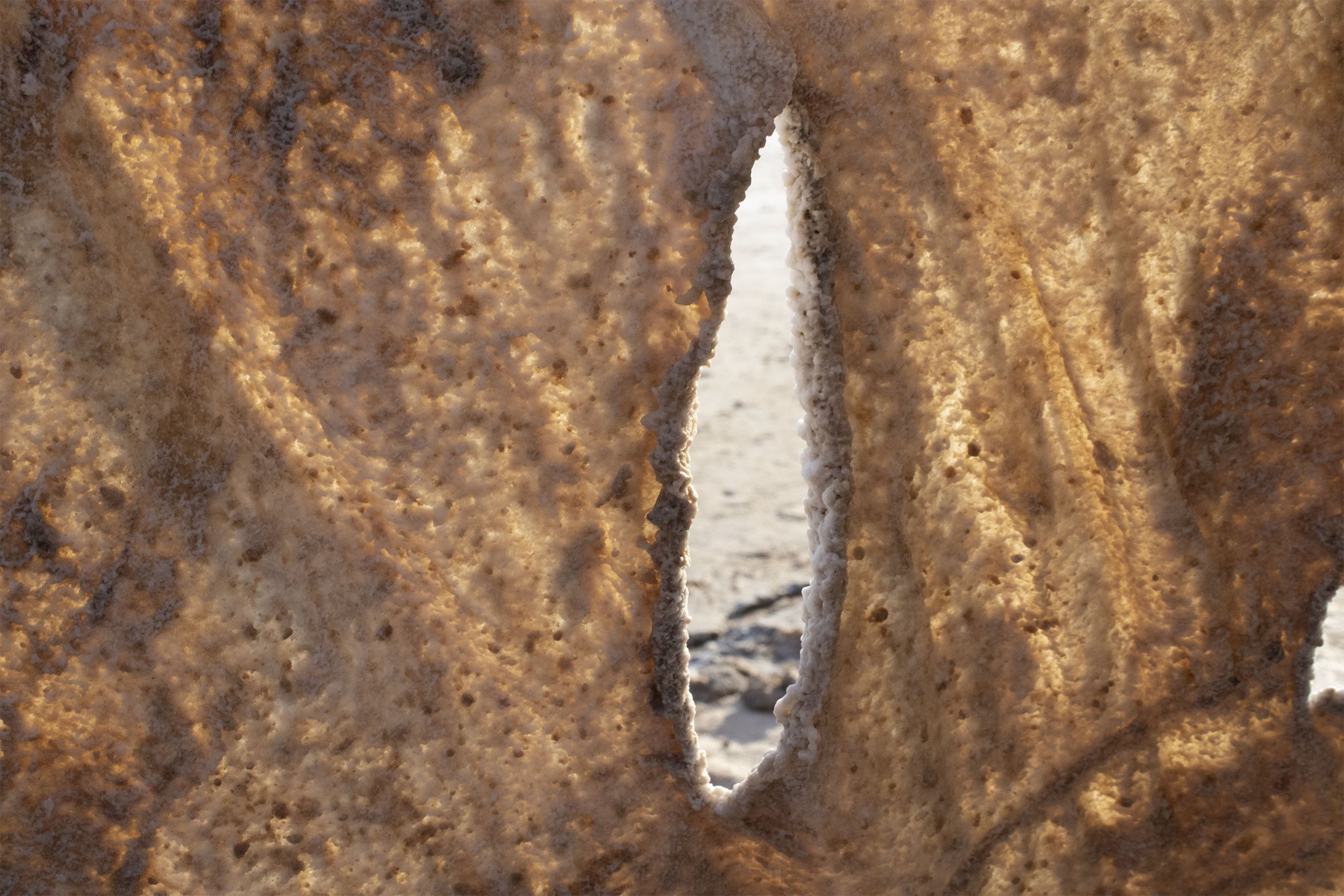
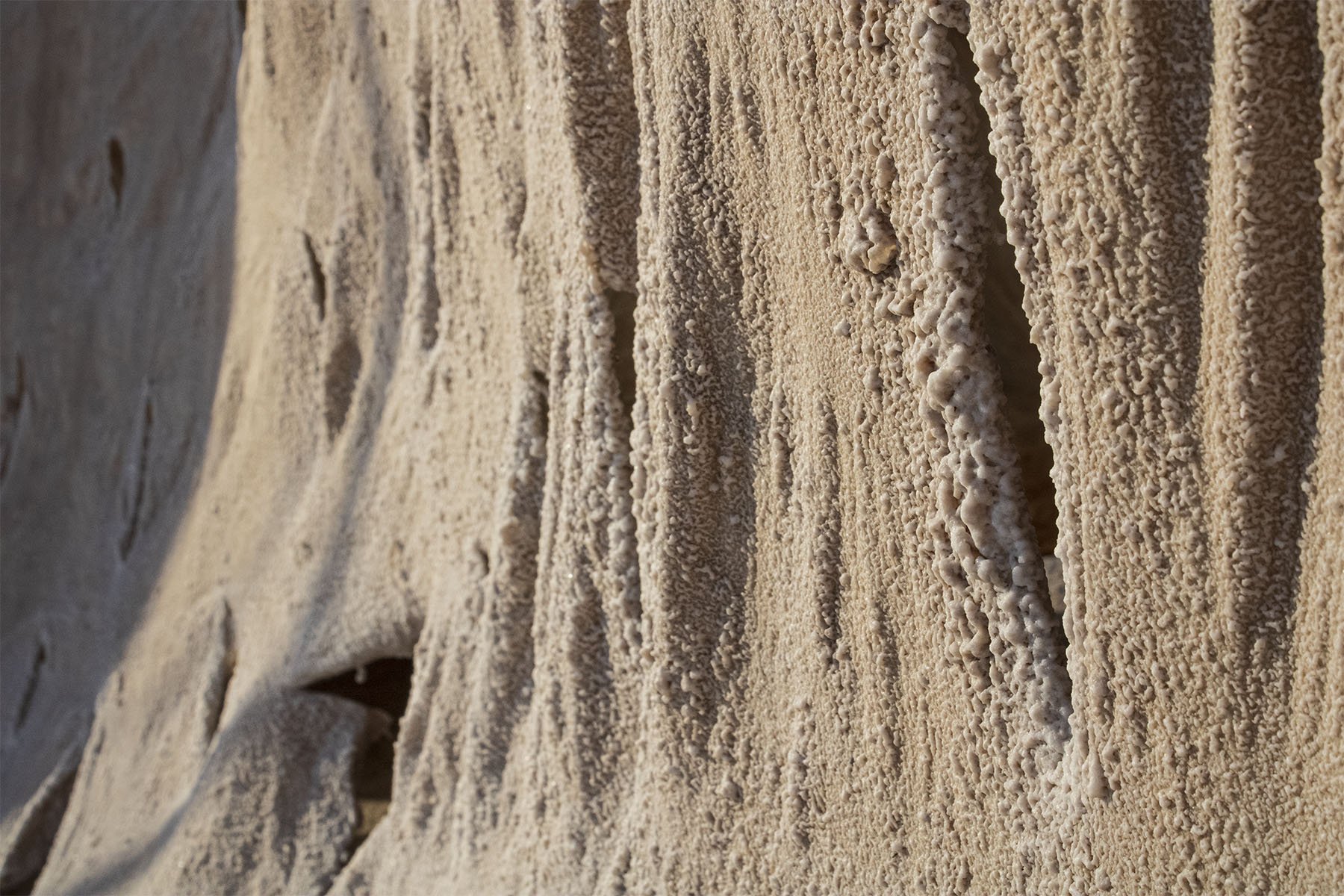
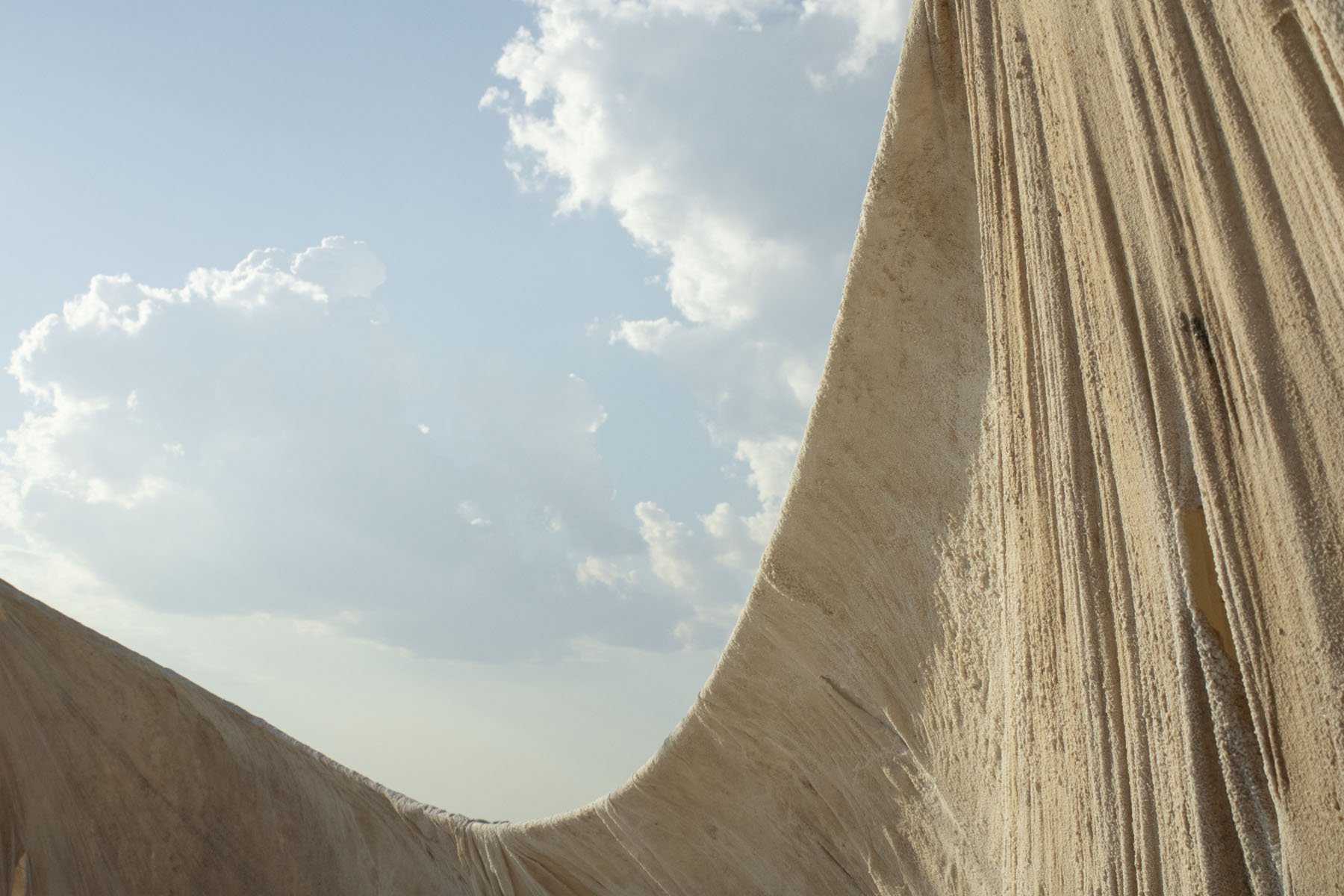
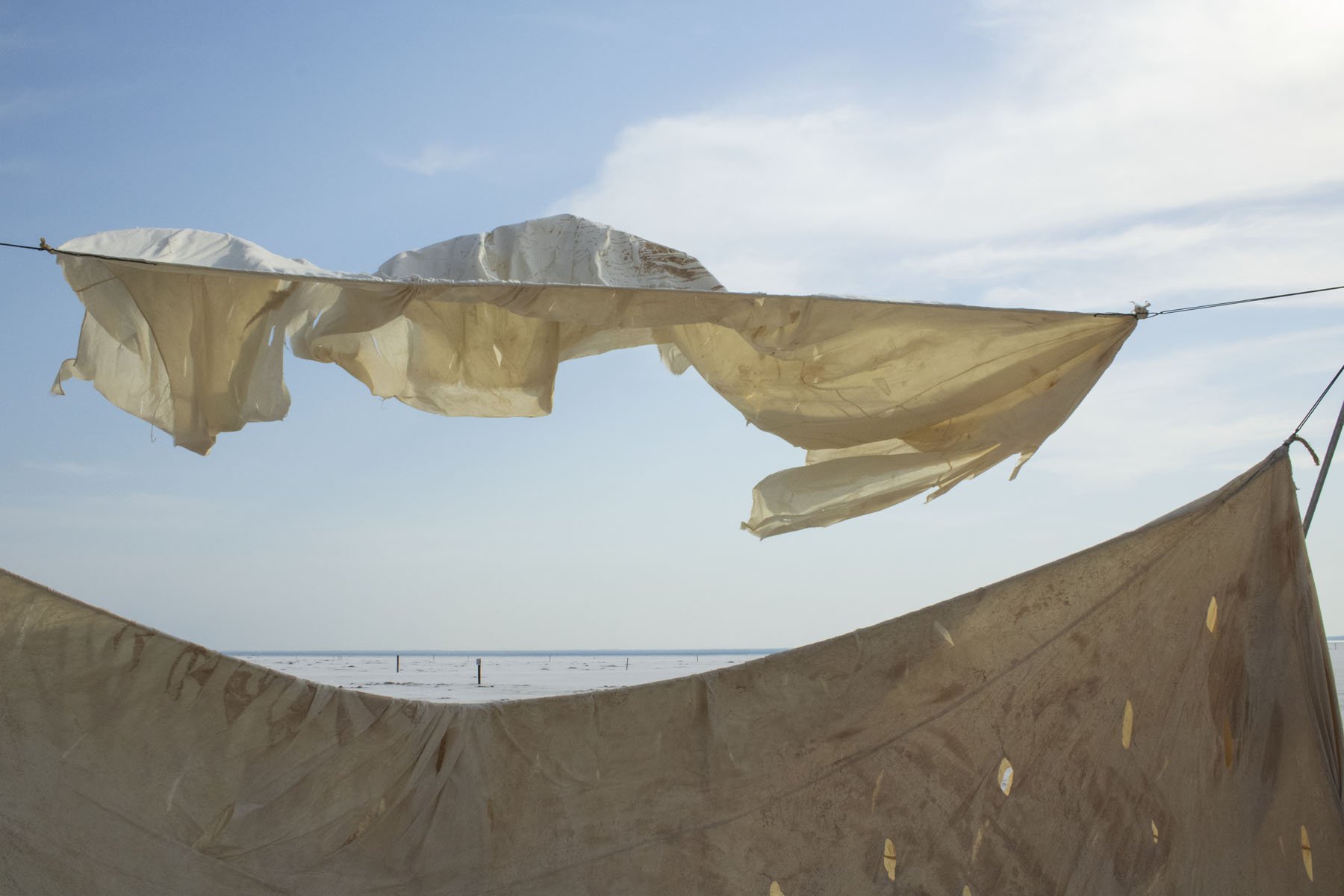

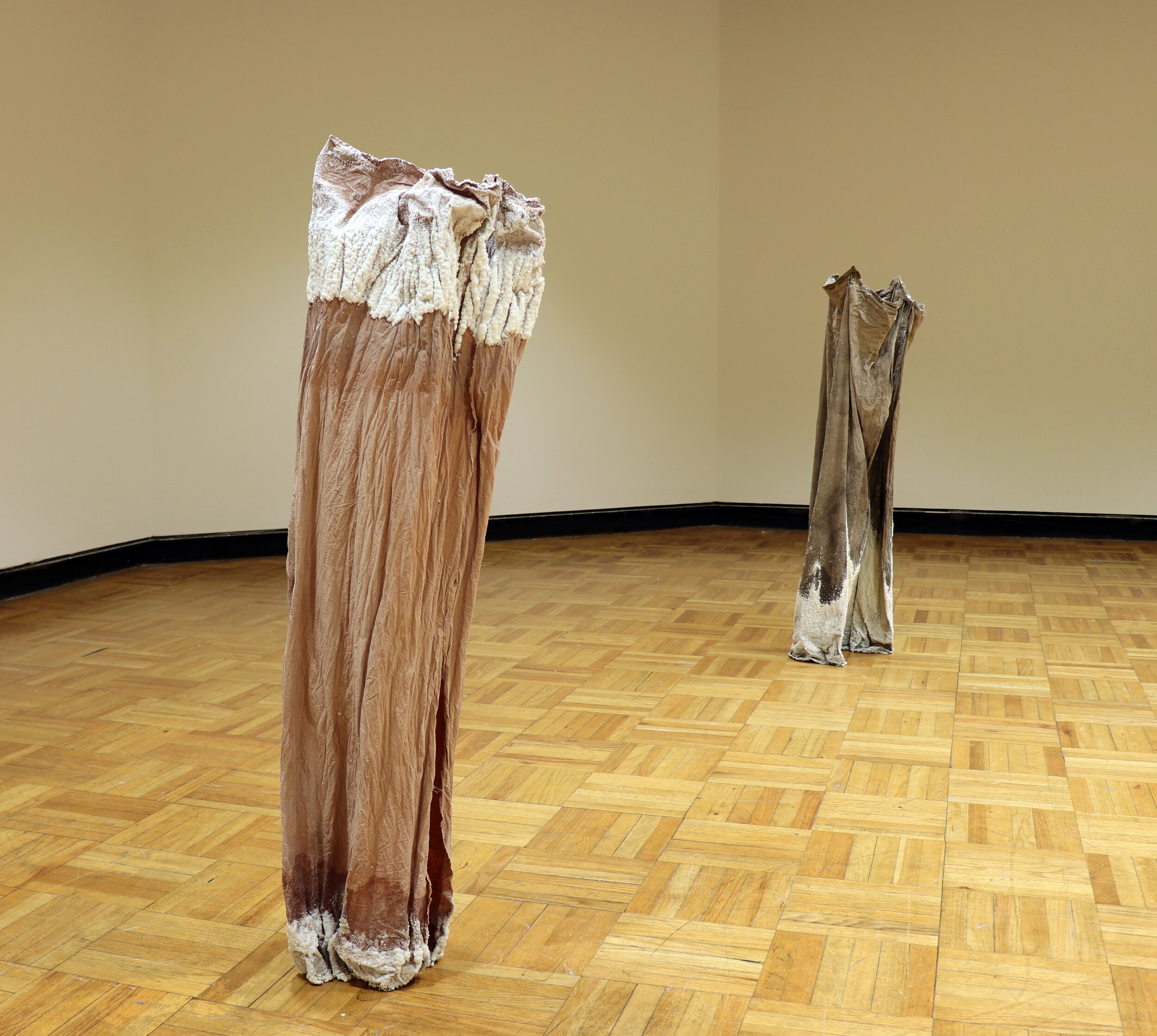
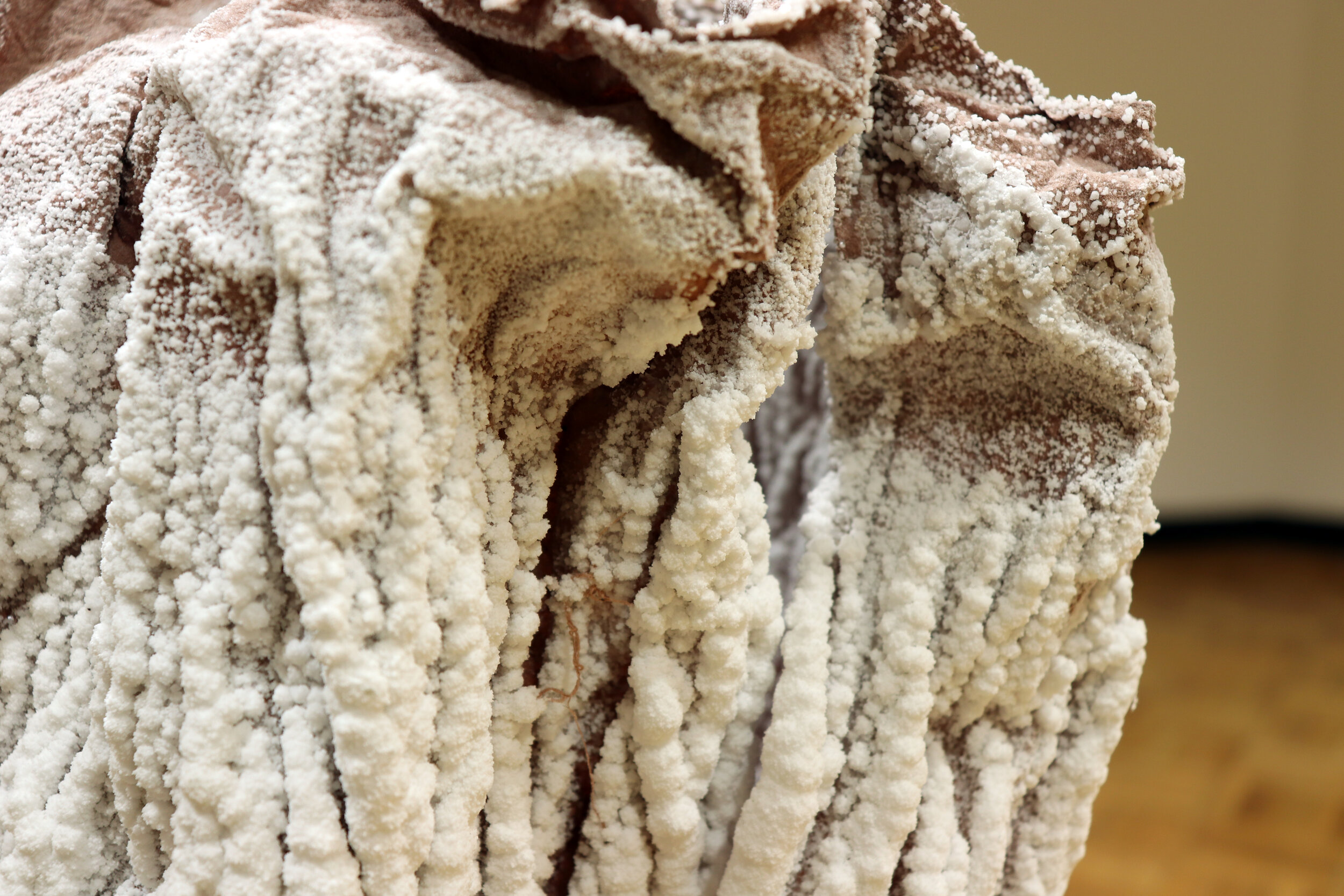
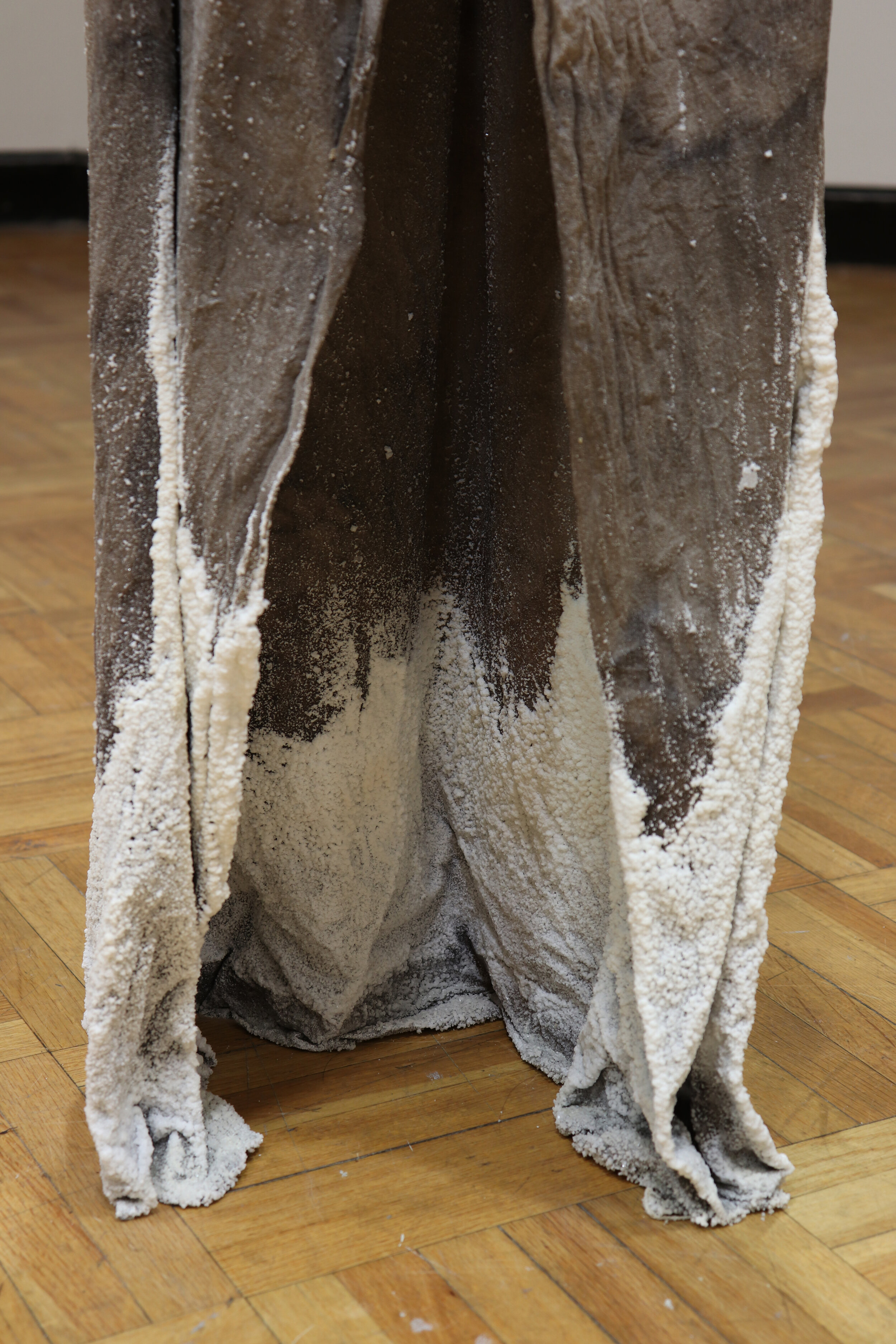
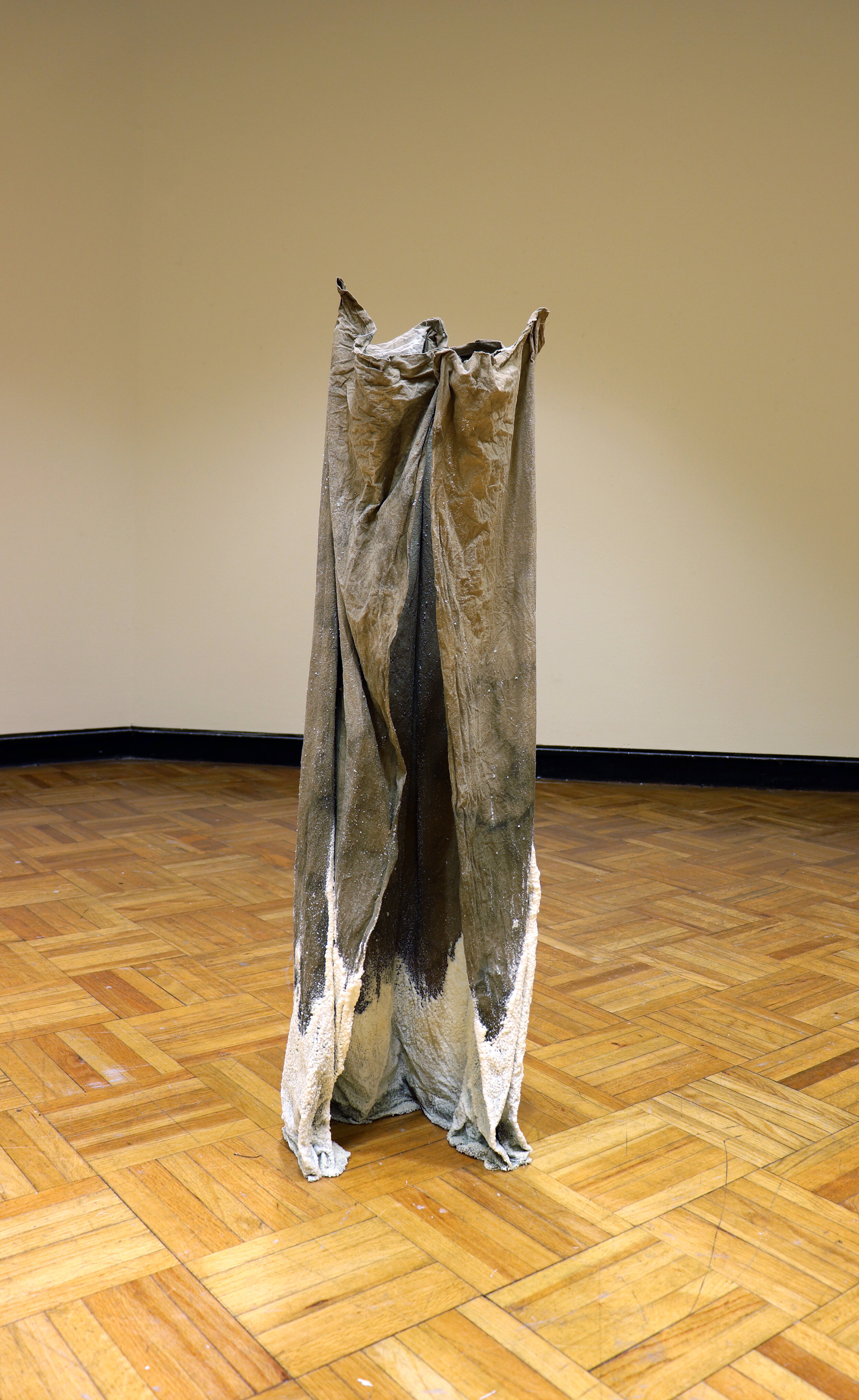

Bet is a temporary site-specific artwork situated in the Great Salt Plains of Jet, Oklahoma. The project examined the entangled relationship between building, dwelling, and environmental cycles through the construction of a tent made of fabric and salt. The tent was constructed using body measures, wind, and cast shadows. It was then repeatedly doused with naturally occurring salinated groundwater, which evaporated to form a thick salt crust on the surface of the fabric. This collaboration with mineral processes suggests an alternative means of human habitation in a shifting landscape- one that accepts change as its foundation.
The Great Salt Plains formed when the prehistoric Western Interior Seaway receded, leaving behind high concentrations of salt. Despite its barren appearance, this is a landscape in flux. Hot sunny days draw salt to the crust of the plains, and rain dissolves that crust, returning it to the groundwater two feet below the surface. The transience of this body of salt provides a fertile ground for an artwork that explores natural cycles. Although we intended to create a rigid form, our relationship with the land shifted throughout the work. The high winds, a heatwave, and a lack of shade proved to be a hard environment for our bodies and construction. We learned to allow our construction to move with the forces at play- far more than we had anticipated. We sliced wind vents in the tent and released the pegs on one side of the structure. The wind lifted this side and held it in the air for hours at a time.
The title (Bet) comes from the origins of the letter B. The hieroglyph of which referred to a room or house. It signifies early divides between indoor and outdoor spaces.

2019, cotton, natural dye, and salt
Salt is acting as the structural material in these works, holding the fabric in the position it was in during the 3-month soaking and drying process.